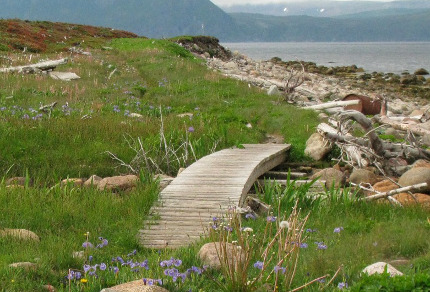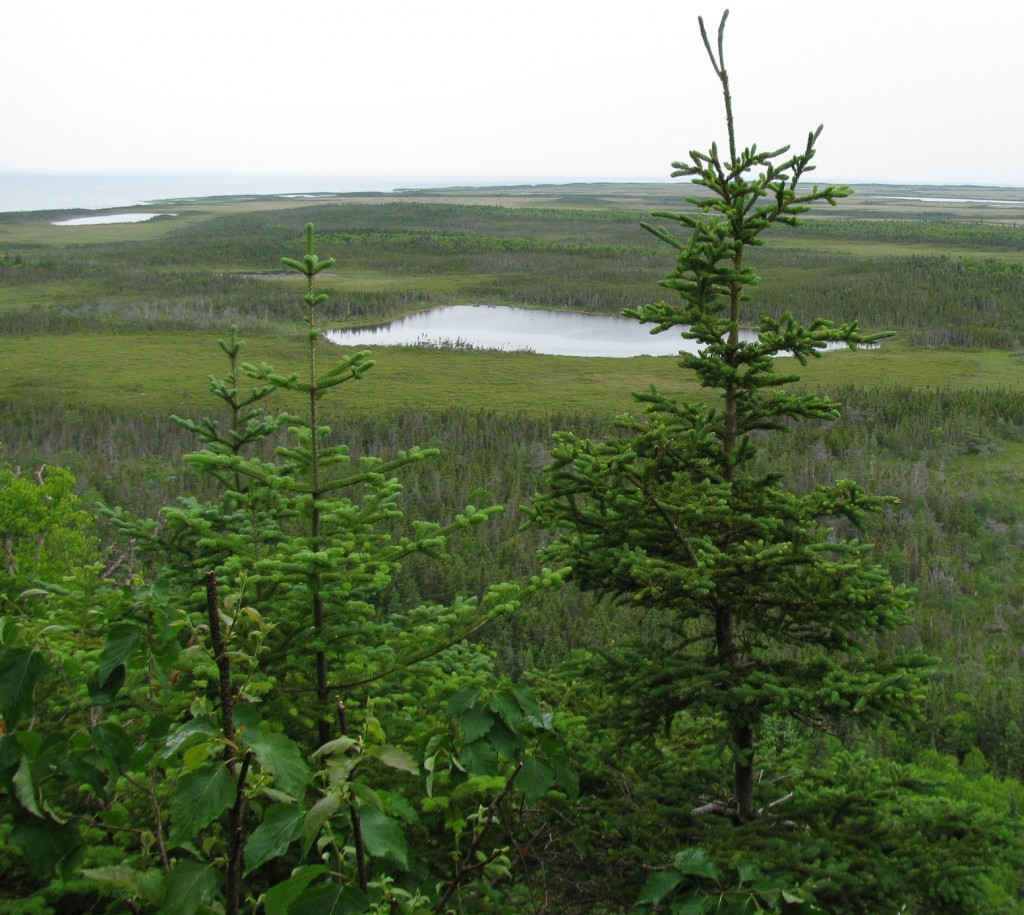
View from Berry Hill Lookout, Gros Morne National Park (© Magi Nams)
After two weeks of cold snaps with temperatures plunging as low as -25° C, plus wild winds and weekend blizzards, Nova Scotia is tasting the promise of spring in mild temperatures lurking around freezing, and fresh breezes sweet with yearning. Today’s post returns to Newfoundland and Gros Morne National Park, where on a drizzly, blustery late June morning, Vilis and I hiked up Berry Hill and gazed out over black spruce muskeg to the island’s West Coast.
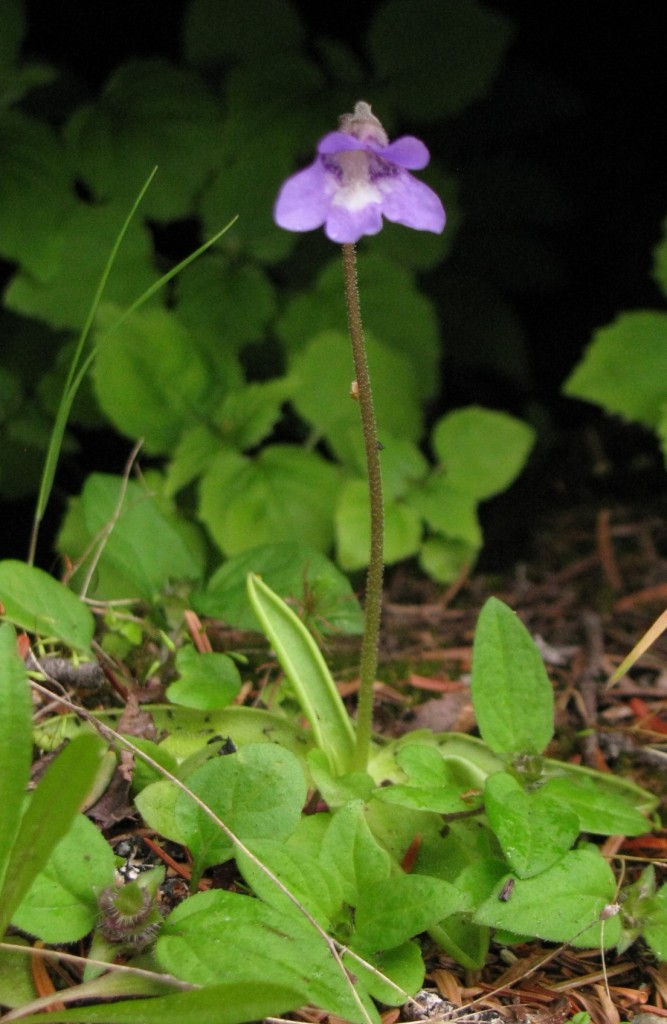
Butterwort, Berry Hill (© Magi Nams)
Bunchberries, buttercups, forget-me-knots, partridgeberries, and butterworts grew at the forest’s feet along the steep trail, with wild raspberries running rampant on the summit. A black and white warbler and ruby-crowned kinglet brightened the air with their songs.
After descending the hill, we drove north and hiked the Coastal Trail between Baker’s Brook and Green Point, a delightful ramble along a wind-swept shoreline edged with blue-flag irises, beach peas, and stunted, gnarled conifers called ‘tuckamore.’ We passed several cave-like shelters cut into the tuckamore, which promised protection from the elements.
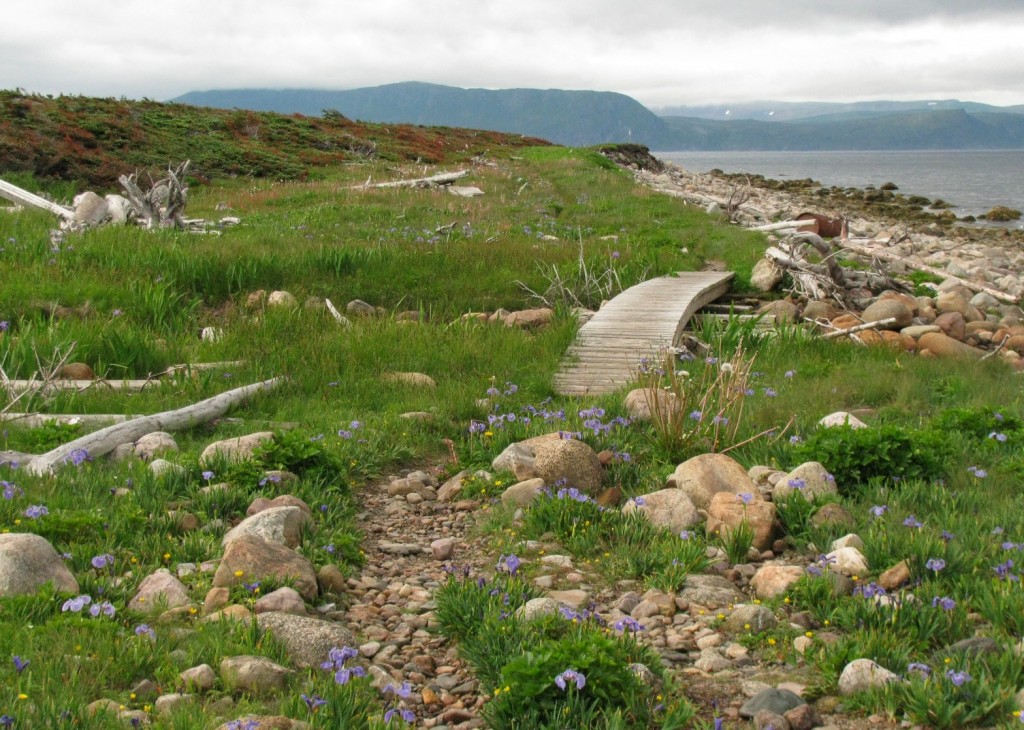
Coastal Trail, Gros Morne National Park (© Magi Nams)

Beach Pea, Coastal Trail (© Magi Nams)
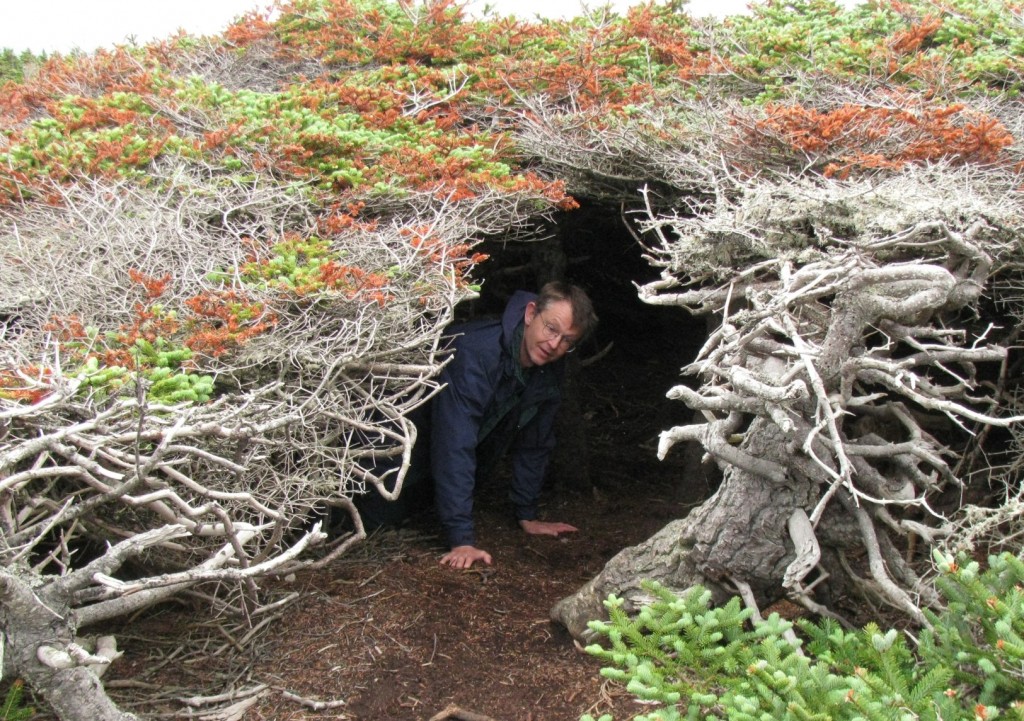
Vilis in Tuckamore Shelter, Coastal Trail (© Magi Nams)
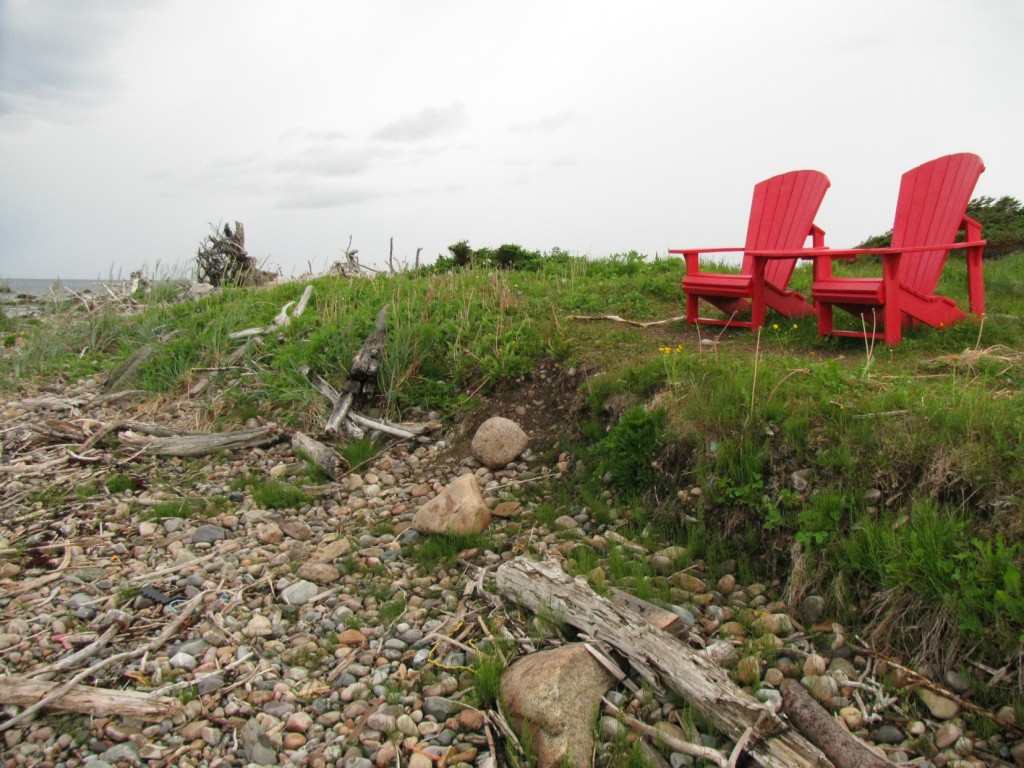
Coastal Trail Shoreline, Gros Morne National Park (© Magi Nams)
We strolled among blooming violets, purple louseworts, harebells, pitcher plants, and wild strawberries and cranberries. Two families of Canada geese floated on a freshwater pond near the shore, a red-breasted merganser fished offshore, and a spotted sandpiper bobbed its way among the pebbles exposed by low tide. Common terns winged gracefully overhead, a bald eagle soared, a snipe winnowed, and we soaked up the sights and sounds of a western Newfoundland rocky shore ripe with summer’s burgeoning plant and animal life.
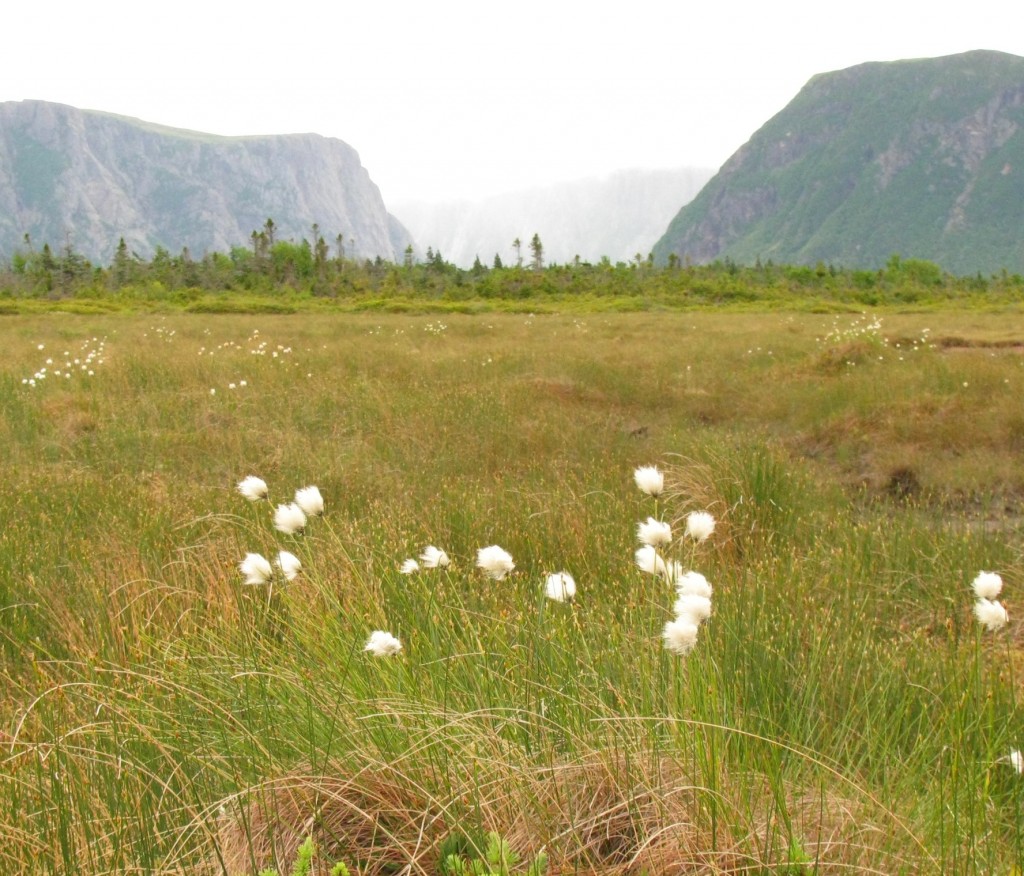
Newfoundland Bog with Blooming Cottongrass, backed by Cliffs Edging Western Brook Pond (© Magi Nams)
We next hiked to Western Brook Pond, a 20-kilometre-long, sperm-shaped lake gouged by glaciers and edged with rearing cliffs. (I have to smile at Newfoundlanders’ definition of ‘pond.’) This is the iconic lake I’ve seen in countless Newfoundland tourist photos taken on sunlit days. However, we didn’t see its grandeur in sunlight. Instead, blasting winds off the Pond spat rain onto us as we walked through stunted bush and boardwalked over an expansive bog graced with dragon’s mouth orchids, cottongrasses, pitcher plants, and blooming Labrador tea and bog laurel.
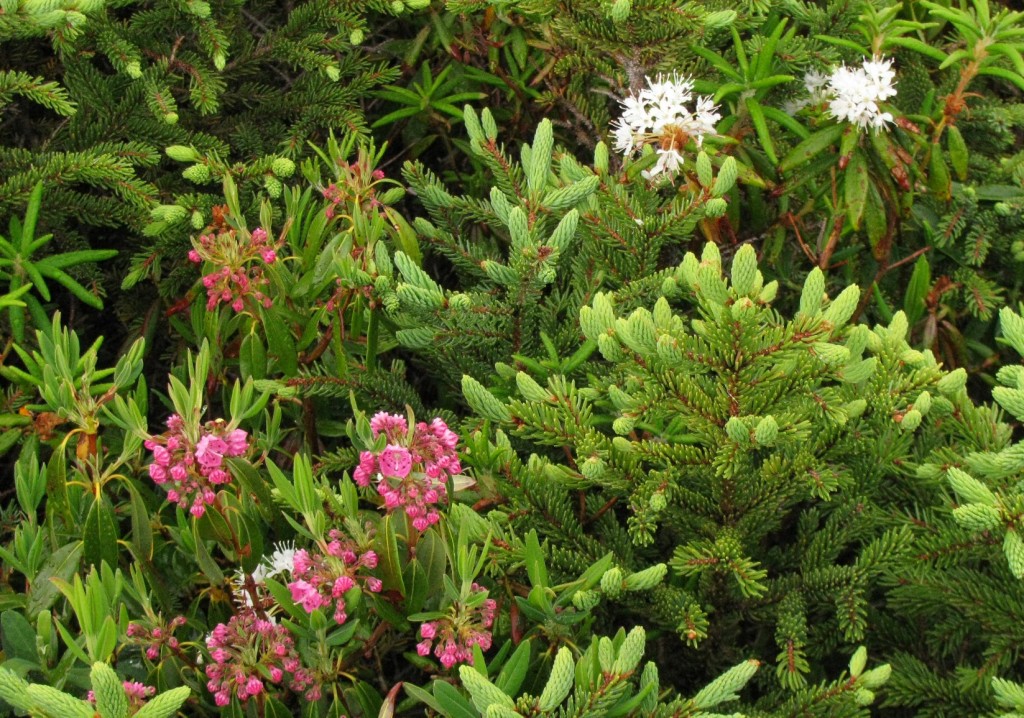
Blooming Bog Laurel, lower left, and Labrador Tea, upper right, Western Brook Pond Trail (© Magi Nams)
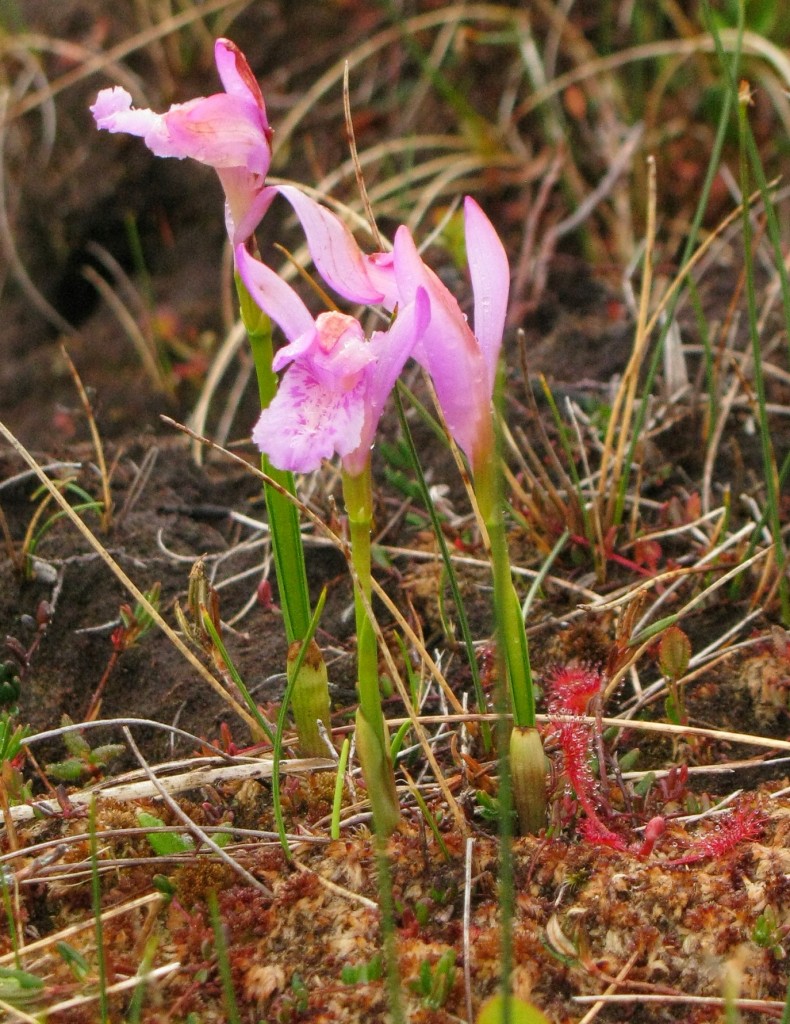
Dragon’s Mouth Orchid, Western Brook Pond Trail (© Magi Nams)
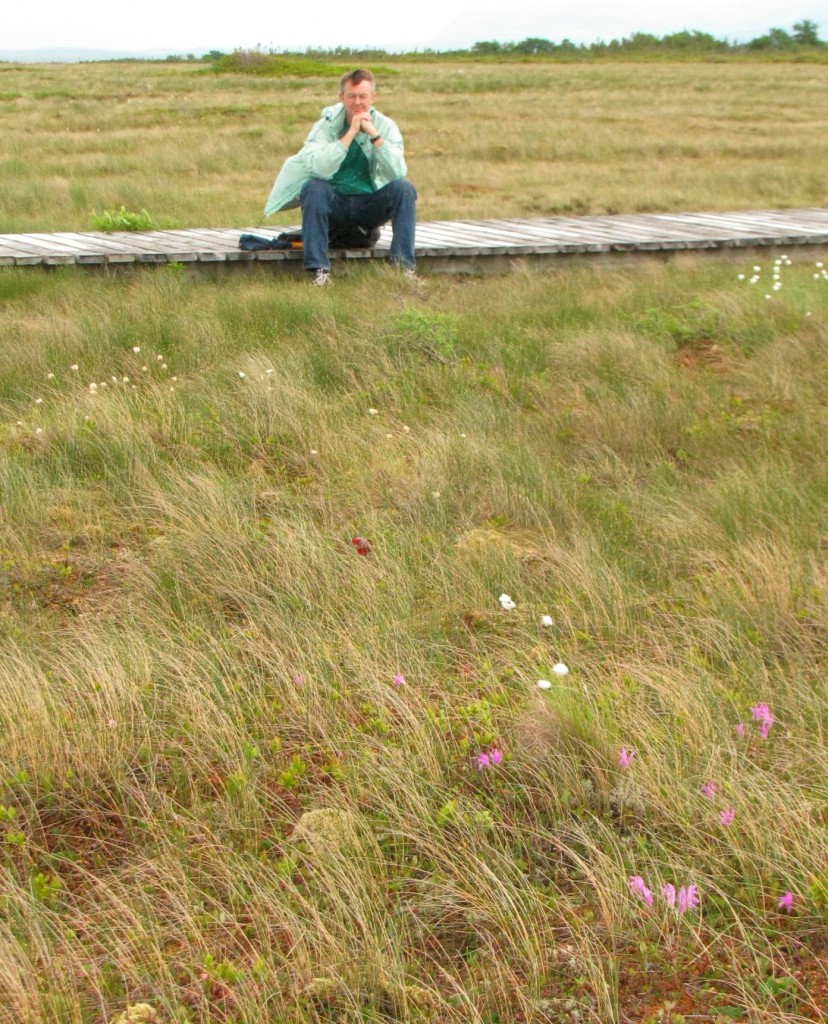
Vilis and Sphagnum Bog, Western Brook Pond Trail (© Magi Nams)
.
Those winds had whipped up a squall on the lake, obscuring visibility, so we didn’t linger. Meandering north along the coast, we set up camp at Shallow Bay, where rain-wet bunchberry flowers gleamed like stars in thickets of conifers in which robins, a Swainson’s thrush, and white-throated sparrow flitted and sang territorial songs of defence and desire.

Bunchberries, Gros Morne National Park (© Magi Nams)

